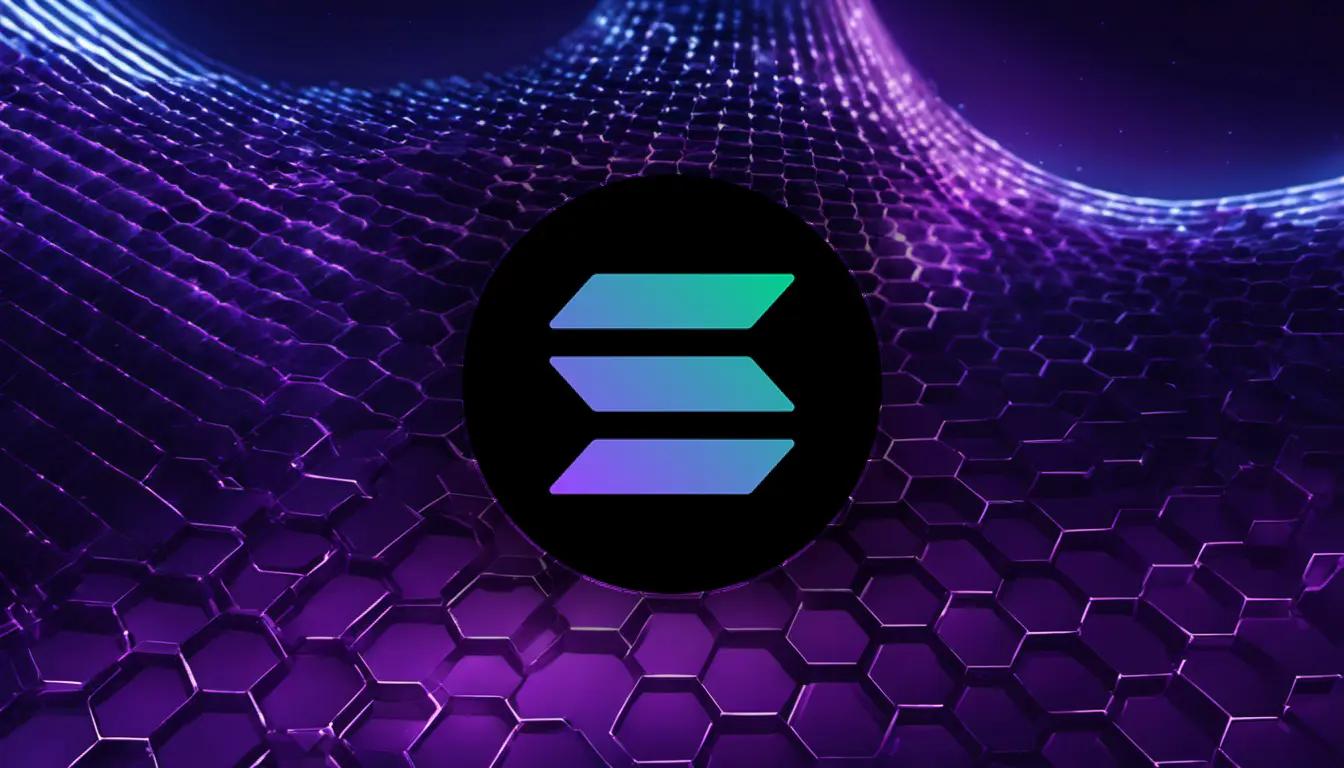The Cosmos blockchain was created to facilitate seamless communication between distributed ledgers without dependence on a centralized server. The Cosmos whitepaper was first published in 2016, it mentioned the network's founders' vision of an "Internet of Blockchains," an interoperable platform of open-source chains that could streamline transactions between various networks.
Interoperability has been a challenge for blockchain developers since the technology's inception. This crucial aspect enables communication among different systems, such as emails sent between Gmail and Hotmail accounts or data-sharing between Android and Apple devices. Cosmos became the first entirely free platform to support interoperability between various systems, including Binance Chain, Terra, and Crypto.org, managing over $151 billion worth of digital assets.
How Does Cosmos Work?
Cosmos Hubs
The cosmos blockchain consists of various interconnected zones, or blockchain applications, that communicate with each other through hubs. The primary hub is the Cosmos Hub. Each zone is capable of operating independently while being connected to the Cosmos Hub, which maintains a record of each zone's state and vice versa. Additionally, Cosmos hubs enable interoperability with other blockchains, such as Bitcoin or Ethereum, through bridges.
Tendermint Byzantine Fault Tolerance (BFT)
By default, the Cosmos SDK utilizes the Tendermint BFT consensus protocol to secure the network. The Tendermint BFT algorithm is responsible for validating transactions and appending blocks to the blockchain. It operates through a proof-of-stake (PoS) governance mechanism, allowing participants to stake the native token, ATOM, and earn rewards. The top 100 stakers can become validator nodes, with voting power determined by the amount of ATOM staked.
Users can delegate their tokens to validators. If users wish to change their delegated validators, they can do so based on their voting preferences.
Inter-Blockchain Communication Protocol
The Inter-Blockchain Communication (IBC) protocol allows for secure message transmission between blockchains or zones. It connects these zones to the Cosmos Hub, enabling the free and secure exchange of assets and data across decentralized, sovereign blockchains.
Through IBC, any cross-chain application can be developed, ranging from cryptocurrency transfers to nonfungible token (NFT) transactions and even cross-chain smart contracts.
Cosmos Features
Cosmos offers a free SDK for developers to build sovereign blockchain applications. While this avoids high transaction fees and creates better scaling features, it may also lead to an increased number of application-specific blockchains. Consequently, this can result in more innovative functionalities in various fields like decentralized finance (DeFi), NFTs, gaming, decentralized autonomous organizations (DAOs), and social networks.
Scalability
Interoperability is a crucial aspect of Cosmos that ensures a scalable system. By adhering to the shared communication standards of the Cosmos model, different types of sovereign blockchains can communicate with each other and evolve their protocol designs. However, achieving scalability may require duplicating blockchains to relieve congestion or dividing applications into multiple application-specific blockchains. This process, although useful in theory, could lead to potential challenges in maintaining a seamless network.
Sustainability
Cosmos uses a Proof-of-Stake (PoS) consensus algorithm to secure the network and promote sustainability. Compared to a Proof-of-Work (PoW) consensus algorithm, PoS reduces the carbon footprint by 99%.
Cosmos vs. Ethereum
In contrast, Cosmos employs Tendermint BFT PoS algorithms capable of processing thousands of transactions per second, presenting a faster and often cheaper alternative to Ethereum's potentially high gas fees during periods of high blockchain traffic.
With Ethereum, complex financial instruments rely on permissionless smart contracts with specific functions. Cosmos, however, treats each smart contract or application as its own blockchain, preventing interference between them and ensuring smoother transactions.
Cosmos also provides a developer-friendly design, enabling the creation of sovereign blockchains efficiently. Its interoperable system facilitates communication between blockchains, an option Ethereum lacks unless employing the more complicated and less secure wrapped tokens method.
Despite these advantages, Ethereum remains popular due to its network effect, often being the preferred platform for Decentralized Finance (DeFi), Non-Fungible Tokens (NFTs), and the Metaverse. These features continue to be significant aspects of the blockchain landscape, maintaining Ethereum's strong presence in the market.
Cosmos vs. Polkadot
Cosmos and Polkadot are often compared because of their similar goals in blockchain interoperability and governance. However, they differ mainly in their transaction validation processes and asset transfer methods across their ecosystems.
In Cosmos, transaction validation is facilitated by the top 100 validators, who have staked the largest amount of ATOM tokens. Delegators can freely join or switch validator pools to stake tokens and receive rewards. Furthermore, individual blockchain zones within the Cosmos network can adopt unique governance methods, including the creation of private permissioned blockchains alongside public ones. This flexibility allows for seamless asset transfers between zones.
On the other hand, Polkadot utilizes a shared set of validators for its parachains (akin to Cosmos' zones) through its centralized Relay chain. This approach ensures unified security across the network. Asset transfers between parachains in Polkadot are executed via smart contracts, while Cosmos employs its Inter-Blockchain Communication (IBC) protocol to enable easy transfers and interactions between chains.
In summary, both Cosmos and Polkadot aim to address blockchain interoperability and governance. But they differ in the following aspects:
- Transaction Validation: Cosmos relies on the top 100 validators with the highest ATOM stake, while Polkadot shares a common set of validators through the Relay chain.
- Asset Transfers: Cosmos uses IBC and the Cosmos Hub for inter-chain transfers, while Polkadot employs smart contracts for asset transfers between parachains.
- Governance Flexibility: Cosmos allows for more diverse governance structures in its blockchain zones, while Polkadot's validators maintain a unified security model.
Cosmos Founders
The genesis of Cosmos can be attributed to collaboration among various teams. The main financial support came from the Swiss Interchain Foundation (ICF), a non-profit organization dedicated to funding open-source blockchain projects, and the Tendermint team.
In 2014, software developers Jae Kwon and Ethan Buchman co-founded the Cosmos network and concurrently developed Tendermint, the consensus algorithm that underpins Cosmos. They went on to write the Cosmos white paper in 2016, which then led to the release of its software in 2019.
To fund the project, the Interchain Foundation organized the initial coin offering (ICO) of ATOM tokens in 2017, raising over $17 million within two weeks. In 2019, Tendermint Inc. secured an additional $9 million through a Series A funding round to further develop the project.
Although Jae Kwon left the project in early 2020, he remains involved, while Ethan Buchman continues to serve as the president of the Interchain Foundation Council. Notably, Cosmos has gained the attention and investment of several key players in the crypto industry, including Paradigm, Bain Capital, and 1confirmation.
Investing in Cosmos (ATOM)
As more zones are built within the network and rely on its security and transparency, ATOM's value may continue to rise due to greater adoption. Cosmos users can benefit from owning and staking ATOM, as it enables them to vote on network upgrades and earn rewards.
It's important to note that there is no cap on ATOM's circulation supply. Instead, Cosmos adjusts the number of tokens created based on the number of ATOM being staked, which can influence the token's value.
Investing in Cosmos (ATOM) is relatively straightforward. Since its introduction to exchanges in 2019, ATOM can be traded on major platforms like Coinbase, Binance, and Kraken. This accessibility allows investors to easily buy and sell the cryptocurrency.
Given ATOM's growth, its central role in the Cosmos ecosystem, and the potential for increased adoption, it may be considered a promising investment for some. However, investors should always conduct thorough research and consider potential risks before making any decisions.
Cosmos Staking
Cosmos staking plays a crucial role in maintaining the economic security and governance of the Cosmos ecosystem. By selecting one or more Cosmos validators, users can participate in the network and earn rewards in the form of ATOM, the native cryptocurrency of Cosmos. Staking ATOM also provides the opportunity to vote on network upgrades and proposals, shaping the future of the Cosmos ecosystem.
Rewards earned through staking come from the transaction fees collected by the Cosmos Hub and are then distributed to ATOM holders. It is advisable to stake with multiple validators concurrently to minimize potential risks associated with validator misconduct or downtime.
To claim staking rewards at the end of the staking period, users can generate a zero-value transaction using a supported wallet. There is no specific wallet exclusive to Cosmos; numerous exchanges and crypto services support the networks and tokens across the Cosmos ecosystem.
Some popular web wallets for managing ATOM include Exodus, Math Wallet, and Citadel One. Other options for sending, receiving, and storing ATOM are Ledger Live, Shapeshift, and Trust Wallet.











